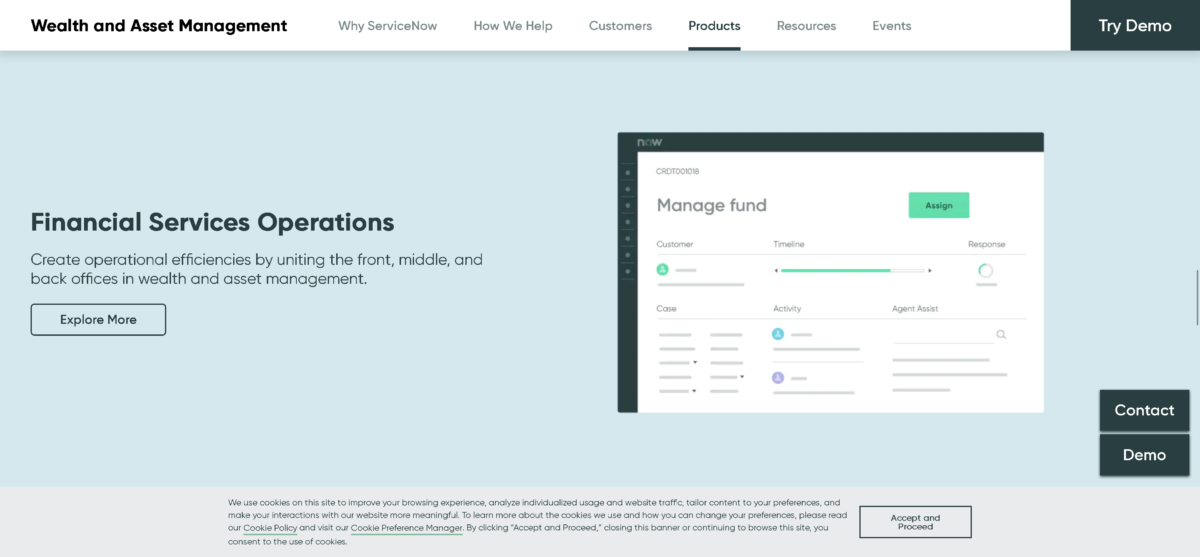2024 Cloud Security Trends
Cloud protection and backup trends in 2024 are evolving rapidly, influenced significantly by technological advancements and the changing needs of organizations. This evolution is evident in the adoption of various innovative security measures and strategies in response to the increasing complexities of cyber threats, particularly in cloud environments.
Technological advancements have led to the development of Zero Trust Architecture, emphasizing a lack of inherent trust for any entity, internal or external. This approach ensures that access permissions are strictly based on authentication and verification, enhancing security against unauthorized access. The integration of Extended Detection and Response (XDR) systems combines multiple security components into a unified platform, improving the detection and response to threats across cloud environments. There’s also a noticeable increase in the adoption of cloud-native security solutions, offering protection specifically designed for cloud threats. Furthermore, the use of machine learning and artificial intelligence in security is growing, leading to more effective and proactive threat detection and analysis.
Notable insights from thought leaders in the field of technology security highlight the importance of these trends. Elia Zaitsev, CTO at CrowdStrike, stresses the need for securing the entire cloud state, pointing out the risks posed by the rapid growth of applications and microservices in cloud environments. He emphasizes that enterprises must focus on securing both the application and infrastructure aspects of their cloud estate to combat the risks posed by cloud-savvy adversaries. Ariel Parnes, COO and co-founder of Mitiga, brings attention to the critical role of SaaS applications in large breaches. He notes that the rapid adoption of these applications, often without adequate organizational visibility or control, creates significant security blind spots. Parnes highlights the urgent need to address these risks, as SaaS applications have become major targets for cyber adversaries due to their access to sensitive data.
In summary, the landscape of cloud protection and backup in 2024 is being reshaped by a combination of technological innovation and the evolving requirements of organizations. The focus is on adopting advanced security architectures like Zero Trust and leveraging the capabilities of AI and ML for threat detection, along with the increasing use of cloud-native security solutions. These developments are a response to the need for more robust security measures in the face of complex and evolving cyber threats. The insights provided by leaders like Elia Zaitsev and Ariel Parnes underscore the critical importance of comprehensive and adaptable security strategies to navigate the intricacies of modern cloud environments effectively.
Here’s a look at these trends, focusing on the different roles of individuals within a company:
- AI-Enhanced Backup Solutions: The integration of AI into backup solutions is becoming increasingly prevalent. IT Managers and Data Scientists are likely to focus on deploying AI-based tools for predictive analytics in data backup and recovery, improving efficiency and reducing the risk of data loss.
- Increased Focus on Cybersecurity: With the rise of cyber threats, the role of the Chief Information Security Officer (CISO) and cybersecurity teams becomes more critical. They will prioritize advanced security measures in backup solutions, including end-to-end encryption and regular security audits, to safeguard against breaches and ransomware attacks.
- Hybrid Cloud Backup Strategies: The trend towards hybrid cloud environments will see IT Strategists and Cloud Architects collaborating to design backup systems that seamlessly integrate on-premises and cloud-based storage, offering flexibility and enhanced data protection.
- Disaster Recovery as a Service (DRaaS): DRaaS will gain traction, leading to a collaborative effort between Cloud Service Managers and Disaster Recovery Specialists. They will focus on implementing DRaaS solutions for rapid data recovery and minimal downtime in the event of a disaster.
- Compliance and Data Sovereignty: Legal Advisors and Compliance Officers will play a key role in ensuring that cloud backup solutions meet regulatory requirements and data sovereignty laws, especially in industries like healthcare and finance where data sensitivity is paramount.
- Automation in Backup Processes: Automation will become a central aspect of cloud backups. Systems Administrators and DevOps Engineers will work on automating backup processes to ensure regular, error-free data backups and efficient resource utilization.
- Edge Computing and Backup: With the rise of edge computing, Network Engineers and IT Administrators will focus on developing backup solutions that cater to the distributed nature of data, ensuring that data generated at the edge is backed up securely and efficiently.
- Multi-Cloud Backup Solutions: Given the growing adoption of multi-cloud environments, Cloud Strategy Consultants and IT Decision Makers will explore backup solutions that are compatible across different cloud platforms, ensuring flexibility and avoiding vendor lock-in.
- Ransomware Protection and Backup: The growing threat of ransomware attacks will see IT Security Teams implementing robust backup strategies as a key defense mechanism, focusing on immutable backups and regular testing to ensure data recoverability.
- User Education and Training: HR and Training Coordinators will play a crucial role in educating employees about best practices in data backup and security, as human error remains a significant risk factor in data protection.
Cloud Backup Roles and Responsibilities
In the evolving landscape of IT and data management, various roles are adapting to incorporate future trends and technologies. The IT Manager plays a crucial role in aligning IT strategies with business objectives and overseeing cloud backup implementations. Data Scientists leverage AI and machine learning to enhance backup system efficiency and predict data loss scenarios. The Chief Information Security Officer (CISO) focuses on cybersecurity strategies to protect cloud backups and ensure compliance. Cybersecurity Specialists work to safeguard against cyber threats and maintain the security of cloud backups.
An IT Strategist develops long-term IT plans, including cloud services and backup strategies, aligning them with business goals. Cloud Architects design cloud infrastructure, ensuring its scalability and efficiency. Disaster Recovery Specialists concentrate on rapid data and system recovery plans in emergencies. Legal Advisors and Compliance Officers monitor cloud backup solutions to ensure they meet legal and regulatory standards.
Systems Administrators manage IT systems, ensuring regular and reliable backups. DevOps Engineers integrate backup processes into the IT workflow, enhancing automation. Network Engineers design network infrastructures, considering the impact of edge computing on backup strategies. Cloud Strategy Consultants advise businesses on choosing appropriate cloud services and backup approaches.
The IT Security Team develops security protocols for cloud backups, while HR and Training Coordinators are key in educating employees on backup practices and data security awareness.
For the cloud protection and backup trends, specific job titles and their corresponding roles include:
- IT Manager: Oversees the implementation and management of IT infrastructure, including cloud backup solutions. They ensure the alignment of IT strategies with business objectives and manage the IT team’s day-to-day operations.
- Data Scientist: Analyzes complex data sets to improve the efficiency of backup systems. They utilize AI and machine learning algorithms to predict and mitigate potential data loss scenarios.
- Chief Information Security Officer (CISO): Responsible for establishing and maintaining the enterprise’s cybersecurity vision and strategy. The CISO ensures that cloud backups are secure and compliant with relevant regulations.
- Cybersecurity Specialist: Focuses on protecting systems, networks, and data from cyber threats. They implement security measures for cloud backups and actively monitor for vulnerabilities and breaches.
- IT Strategist: Develops long-term plans for IT infrastructure, including cloud services and backup strategies. They ensure that the IT strategy supports overall business goals.
- Cloud Architect: Designs and oversees the deployment of cloud infrastructure, including backup solutions. They ensure that cloud services are scalable, reliable, and efficient.
- Disaster Recovery Specialist: Specializes in planning and implementing disaster recovery strategies. They focus on ensuring rapid recovery of data and systems in the event of a disaster.
- Legal Advisor/Compliance Officer: Ensures that cloud backup solutions comply with legal and regulatory requirements. They keep abreast of changes in laws that affect data privacy and protection.
- Systems Administrator: Manages and maintains IT systems, including backup and recovery processes. They ensure that backups are performed regularly and are easily recoverable.
- DevOps Engineer: Works at the intersection of software development and IT operations. They automate backup processes and integrate them into the overall IT workflow.
- Network Engineer: Responsible for designing and maintaining the network infrastructure, including considerations for edge computing and its impact on backup strategies.
- Cloud Strategy Consultant: Advises on cloud solutions, including backup and recovery. They help businesses choose the right cloud services and backup strategies to meet their needs.
- IT Security Team: A group of professionals focused on protecting IT systems from threats. They develop and implement security protocols for cloud backup and recovery systems.
These roles work collaboratively in the complex ecosystem of cloud protection and backup, ensuring that the company’s data is secure, compliant, and recoverable in any situation.
In 2024, cloud protection and backup strategies are expected to be more integrated, automated, and security-focused, with various roles within the company collaborating to ensure robust, compliant, and efficient data protection mechanisms.
Branded series by Veeam
By Randy Ferguson





